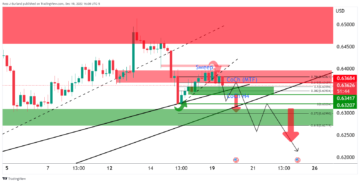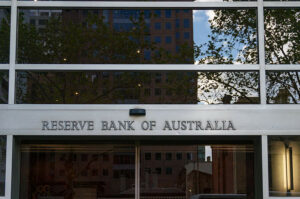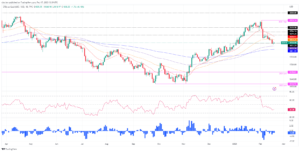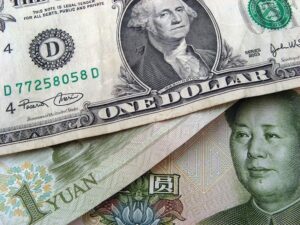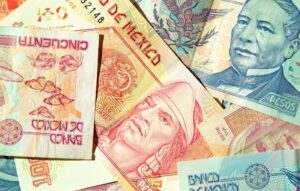- Pound Sterling vs US Dollar surges after US CPI data but then gives up gains to trade back down near 1.2600.
- US headline inflation numbers came out at a lower-than-expected 4.9% pace on a YoY basis.
- The data gives the broader long-term GBP/USD uptrend impetus to extend.
The Pound Sterling (GBP) rallied sharply versus the US Dollar (USD) after the release of US Consumer Price Index (CPI) data for April on Wednesday. The pair failed to hold onto its gains, however, and pulled back down to near the 1.2600 level during the latter part of the US Session.
That said, the GBP/USD pair is in a bullish long-term technical uptrend, advantaging long over short holders.
GBP/USD market movers
- US CPI inflation dips to 4.9% YoY in April, missing expectations of 5.0%. This reflects slowing inflationary pressures, and counter-intuitively weakens the US Dollar (strengthening the GBP/USD), as it makes it even more likely the Federal Reserve (Fed) will leave interest rates unchanged.
- The Pound gains versus the US Dollar due to a widening monetary policy divergence since in the UK interest rates are still expected to rise substantially higher, and currencies that have higher interest rates to benefit from greater demand.
- Apart from the headline YoY figure, the CPI release came out as expected: rising by a faster 0.4% rate MoM in April, and for Core CPI rising 0.4% MoM and 5.5% YoY.
- The Pound Sterling will be impacted by the outcome of the Bank of England (BoE) policy meeting on Thursday. A 25 bps interest rate hike is now expected with almost 100% certainty. What is less certain is the bank’s forward guidance, BoE Chairman Andrew Bailey’s comments in the press conference, and the distribution of member votes.
- The distribution of voting at the BoE’s last meeting was 7-2, with seven policymakers voting for a 25 bps rate hike and two voting for no change. If the distribution changes either way that will impact GBP with a decrease in the ‘no-change’ camp lifting GBP/USD and vice versa for an increase.
- US Treasury bond yields have risen for four consecutive days, providing the US Dollar with some support, but yields are pulling back slightly on Tuesday, which could be a slight headwind for the USD.
GBP/USD technical analysis: New leg in uptrend unfolds
GBP/USD broadly keeps extending its established uptrend making progressively higher highs and higher lows, and this is likely to continue favoring Pound Sterling longs over shorts.
The shooting star Japanese candlestick reversal pattern on GBP/USD that formed on Monday at the new year-to-date (YTD) highs has failed to obtain confirmation. Tuesday’s bullish close shows a lack of bearish follow-through and severely reduces the validity of the reversal. The surge post-CPI has now almost reclaimed the YTD highs and further invalidated the pattern.
Given the overall trend is bullish, the exchange rate is likely to continue rallying. The May 2022 highs at 1.2665 provide the first resistance level, but once breached it opens the way to the 100-week Simple Moving Average (SMA) situated at 1.2713, and finally at the 61.8% Fibonacci retracement of the 2021-22 bear market, at 1.2758. All provide potential upside targets for the pair. Each level will need to be decisively breached to open the door to the next.
Decisive bearish breaks are characterized by long daily candles that break through key resistance levels in question and close near their highs or lows of the day (depending on whether the break is bullish or bearish). Alternatively, three consecutive candles that break through the level can also be decisive. Such insignia provide confirmation that the break is not a ‘false break’ or bull/bear trap.
It would require a decisive break below the 1.2435 May 2 lows to challenge the dominance of the uptrend and suggest the chance of a bear reversal.
The Relative Strength Index (RSI) is in the mid 60s at the time of writing after peaking in the upper 60s on May 5. This suggests a mild bearish divergence may be developing. If RSI remains below 68 at Wednesday’s close it will confirm a bearish divergence and indicate some underlying weakness. This alone, however, would not be enough evidence to conclude a reversal was in the making.
Pound Sterling FAQs
What is the Pound Sterling?
The Pound Sterling (GBP) is the oldest currency in the world (886 AD) and the official currency of the United Kingdom. It is the fourth most traded unit for foreign exchange (FX) in the world, accounting for 12% of all transactions, averaging $630 billion a day, according to 2022 data.
Its key trading pairs are GBP/USD, aka ‘Cable’, which < href=”https://fxssi.com/the-most-traded-currency-pairs”>accounts for 11% of FX, GBP/JPY, or the ‘Dragon’ as it is known by traders (3%), and EUR/GBP (2%). The Pound Sterling is issued by the Bank of England (BoE).
How do the decisions of the Bank of England impact on the Pound Sterling?
The single most important factor influencing the value of the Pound Sterling is monetary policy decided by the Bank of England. The BoE bases its decisions on whether it has achieved its primary goal of “price stability” – a steady inflation rate of around 2%. Its primary tool for achieving this is the adjustment of interest rates.
When inflation is too high, the BoE will try to rein it in by raising interest rates, making it more expensive for people and businesses to access credit. This is generally positive for GBP, as higher interest rates make the UK a more attractive place for global investors to park their money.
When inflation falls too low it is a sign economic growth is slowing. In this scenario, the BoE will consider lowering interest rates to cheapen credit so businesses will borrow more to invest in growth-generating projects.
How does economic data influence the value of the Pound?
Data releases gauge the health of the economy and can impact the value of the Pound Sterling. Indicators such as GDP, Manufacturing and Services PMIs, and employment can all influence the direction of the GBP.
A strong economy is good for Sterling. Not only does it attract more foreign investment but it may encourage the BoE to put up interest rates, which will directly strengthen GBP. Otherwise, if economic data is weak, the Pound Sterling is likely to fall.
How does the Trade Balance impact the Pound?
Another significant data release for the Pound Sterling is the Trade Balance. This indicator measures the difference between what a country earns from its exports and what it spends on imports over a given period.
If a country produces highly sought-after exports, its currency will benefit purely from the extra demand created from foreign buyers seeking to purchase these goods. Therefore, a positive net Trade Balance strengthens a currency and vice versa for a negative balance.
- SEO Powered Content & PR Distribution. Get Amplified Today.
- PlatoAiStream. Web3 Data Intelligence. Knowledge Amplified. Access Here.
- Minting the Future w Adryenn Ashley. Access Here.
- Buy and Sell Shares in PRE-IPO Companies with PREIPO®. Access Here.
- Source: https://www.fxstreet.com/news/pound-sterling-spikes-to-new-year-to-date-highs-after-us-inflation-data-202305101428
- :has
- :is
- :not
- $UP
- 1
- 10
- 12
- 15%
- 2%
- 2022
- 7
- 9
- a
- access
- According
- Accounting
- Accounts
- achieved
- achieving
- Ad
- Adjustment
- After
- All
- All Transactions
- alone
- also
- an
- analysis
- and
- Andrew
- April
- ARE
- around
- AS
- At
- attractive
- average
- averaging
- back
- Balance
- Bank
- Bank of England
- Bank of England (BOE)
- basis
- BE
- Bear
- Bear Market
- bearish
- bearish divergence
- below
- benefit
- between
- Billion
- bis
- BoE
- bond
- Bond yields
- borrow
- Break
- breaks
- broader
- broadly
- Bullish
- businesses
- but
- buyers
- by
- came
- Camp
- CAN
- Candles
- certain
- certainty
- chairman
- challenge
- Chance
- change
- Changes
- characterized
- Close
- CO
- comments
- conclude
- Conference
- Confirm
- confirmation
- consecutive
- Consider
- continue
- Core
- could
- country
- CPI
- CPI data
- created
- credit
- currencies
- Currency
- daily
- data
- day
- Days
- decided
- decisions
- decisive
- decrease
- Demand
- Depending
- developing
- difference
- direction
- directly
- distribution
- Divergence
- do
- does
- Dollar
- Dominance
- Door
- down
- due
- during
- each
- Economic
- Economic growth
- economy
- either
- employment
- encourage
- England
- enough
- established
- Even
- evidence
- exchange
- Exchange rate
- expanded
- expectations
- expected
- expensive
- exports
- extend
- extending
- extra
- factor
- Failed
- Fall
- Falls
- FAQ
- faster
- Fed
- Federal
- federal reserve
- Fibonacci
- Figure
- Finally
- First
- For
- foreign
- foreign exchange
- foreign investment
- formed
- Forward
- four
- Fourth
- from
- further
- FX
- Gains
- GBP
- GBP/USD
- GDP
- generally
- given
- gives
- Global
- goal
- good
- goods
- greater
- Growth
- guidance
- Have
- headline
- Health
- High
- higher
- highly
- Highs
- Hike
- hold
- holders
- However
- HTTPS
- if
- Impact
- impacted
- important
- imports
- in
- Increase
- index
- indicate
- Indicator
- Indicators
- inflation
- inflation rate
- Inflationary
- Inflationary pressures
- influence
- influencing
- interest
- INTEREST RATE
- interest rate hike
- Interest Rates
- Invest
- investment
- Investors
- Issued
- IT
- ITS
- Japanese
- Key
- key resistance
- Kingdom
- known
- Lack
- Last
- Leave
- less
- Level
- levels
- lifting
- likely
- Long
- long-term
- Low
- lowering
- Lows
- make
- MAKES
- Making
- manufacturing
- Market
- May..
- measures
- meeting
- member
- Mid
- missing
- mom
- Monday
- Monetary
- Monetary Policy
- money
- more
- most
- moving
- moving average
- Near
- Need
- negative
- net
- New
- next
- no
- now
- numbers
- obtain
- of
- official
- oldest
- on
- once
- only
- open
- opens
- or
- otherwise
- out
- Outcome
- over
- overall
- Pace
- pairs
- Park
- part
- Pattern
- People
- period
- Place
- plato
- Plato Data Intelligence
- PlatoData
- policy
- policymakers
- positive
- potential
- pound
- pound sterling
- press
- price
- primary
- progressively
- projects
- provide
- providing
- pulling
- purchase
- purely
- put
- question
- raising
- Rate
- Rate Hike
- Rates
- reduces
- reflects
- relative strength index
- Relative Strength Index (RSI)
- release
- Releases
- remains
- require
- Reserve
- Resistance
- retracement
- Reversal
- Rise
- Risen
- rising
- rsi
- Said
- scenario
- seeking
- Services
- session
- seven
- severely
- shooting
- Short
- shorts
- Shows
- sign
- significant
- Simple
- since
- single
- Slowing
- SMA
- So
- some
- spikes
- Star
- steady
- sterling
- Still
- strength
- Strengthen
- strengthening
- Strengthens
- strong
- substantially
- such
- suggest
- Suggests
- support
- surge
- Surges
- targets
- Technical
- Technical Analysis
- that
- The
- the UK
- the United Kingdom
- the world
- their
- then
- therefore
- These
- this
- three
- Through
- thursday
- time
- to
- too
- tool
- trade
- traded
- Traders
- Trading
- trading pairs
- Transactions
- treasury
- Trend
- try
- Tuesday
- two
- Uk
- underlying
- unit
- United
- United Kingdom
- Upside
- uptrend
- us
- US CPI
- US Dollar
- us inflation
- USD
- value
- Versus
- votes
- Voting
- vs
- was
- Way..
- weakness
- Wednesday
- What
- What is
- whether
- which
- will
- with
- world
- would
- writing
- yields
- zephyrnet

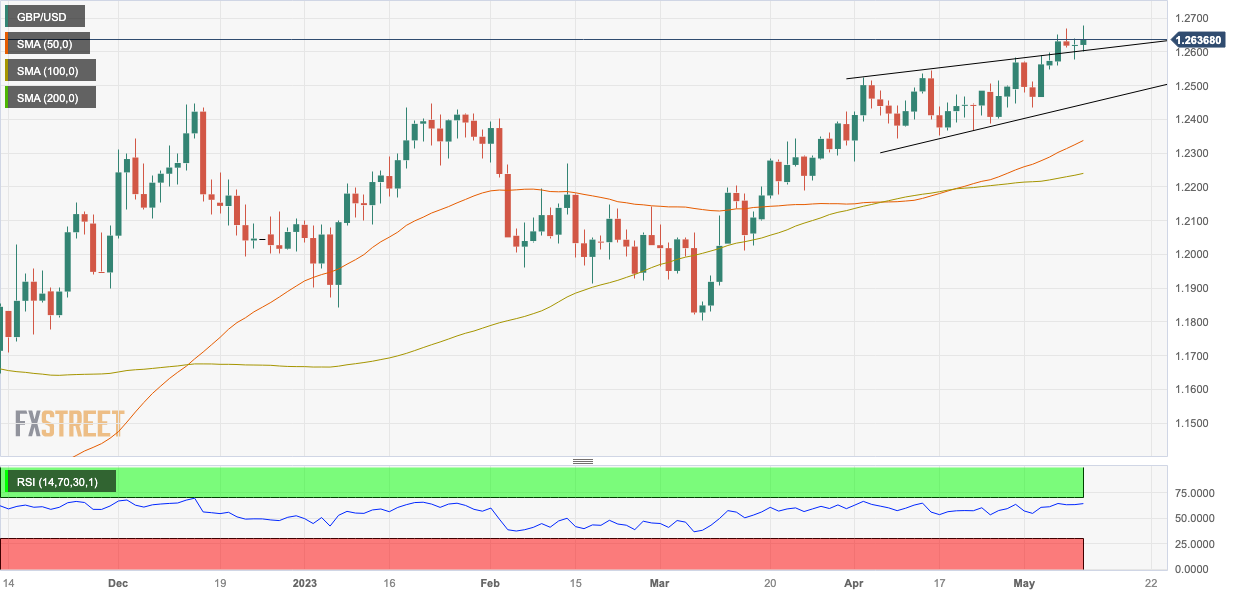
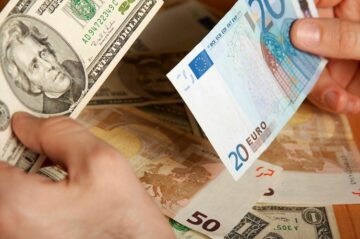
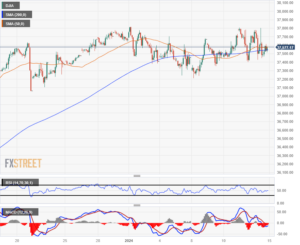

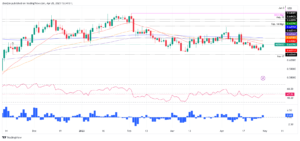

![Is Adidas a great stock to buy at the end of Q1? [Video]](https://platoaistream.com/wp-content/uploads/2023/01/is-adidas-a-great-stock-to-buy-at-the-end-of-q1-video-360x297.jpg)
